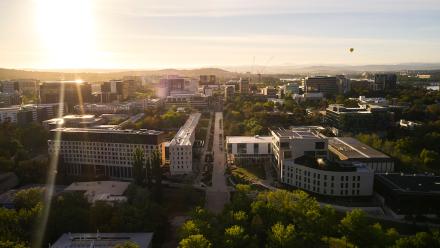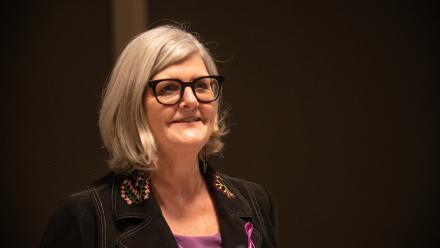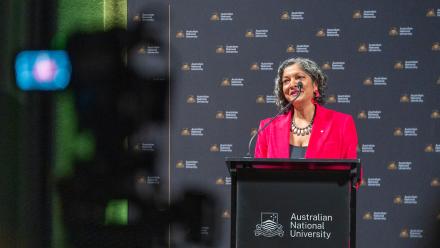Dr Richard Barwick
Born in Christchurch, New Zealand, Richard Barwick (1929-2012) enjoyed a long and event-filled career built on his love for nature and the outdoors.
Richard spent most of his career as a vertebrate zoologist, paleontologist, Antarctic explorer and Aboriginal-rights activist. In his formative years, Richard attended Christchurch Boys High School and Victoria University of Wellington. A keen outdoorsman, Richard worked for the New Zealand National Forest Survey to pay for his university education. He accepted a job as Junior Lecturer, Zoology, at Victoria University of Wellington, and spent long periods living on the isolated and extremely rugged Brothers Island in Cook Straight studying the giant gecko and the tuatara. He also undertook research on whaling in the southern ocean.
In 1956-57 and 1957-58 Richard was seconded by Victoria University to the official New Zealand summer support party of Sir Edmund Hillary's Trans-Antarctic Expedition. Barwick Valley, an Antarctic dry valley was named in his honour. (In 2009, an account of these Antarctic explorations written by Colin Bull, Innocents in the Dry Valleys, was published.)
In 1959, Richard applied for a lectureship at Canberra University College, which then amalgamated with the newly developed ANU. Richard enrolled for a PhD studying the life cycle and ecology of Cunningham’s skink, which inhabits granite rock outcrops around Canberra. Although technically a herpetologist, Richard conducted his early research through the John Curtin Medical School. Soon after, he was appointed to a lectureship in the zoology department at ANU. He was a founding member of the Australian Herpetological Society and served two terms as Vice-President.
During a sabbatical at the Berkeley campus of the University of California in 1965-66, Richard was introduced to animal radio-telemetry, then an emergent technology in zoology for animal tracking and metabolic monitoring. He pioneered the use of this technology in Australian zoological research, teaching telemetry to more than 100 researchers.
In 1973, Richard took a sabbatical at the University of British Colombia, Vancouver, Canada, furthering his knowledge of the world of natural history illustrators, with side visits including the University of Montreal and the British Museum of Natural History. In the same year, Richard undertook a four vehicle crossing of the Simpson Desert, following the 1939 route taken by fellow Antarctic explorer Charles Madigan.
In 1975, Richard’s area of research interest shifted from lifecycle ecology to the evolution of vertebrates, commencing paleontological research with geologist and friend Professor Kenton W.S. Campbell. This collaboration led to publications on the evolution and functional anatomy of the lungfishes from the Lower Devonian (Burrinjuck) and on the anatomy of the mid-Devonian fish from the Gogo region.
Richard’s contribution to the life of the University was extraordinary – his diverse roles included service on a number of key management committees including the ANU Press, Buildings and Grounds, the Northern Australia Research Unit (NARU), the Editorial Board of the ANU Press, and the Edith and Joy London Foundation. Richard served as the first Deputy Warden of Bruce Hall, Balliff of the Edith and Joy London Foundation and as Master of the Cellars at University House.
Richard was married to Diane Elizabeth MacEachern Barwick (1938–1986) the influential Canadian-born anthropologist, researcher and teacher in the field of Australian Aboriginal history, and culture. Richard was a frequent collaborator with Diane. Indeed, Diane was instrumental in establishing the journal Aboriginal History, and in addition to his own work, over a period of 30 years Richard contributed more than 30 Aboriginal History journal and monograph covers. After Diane’s death Richard edited, and published a number of Diane’s unfinished manuscripts, including the major work Rebellion at Corranderrk (1996).
Richard retired as Reader in Zoology in 1992 with more than 50 Honours, Masters and PhD students. Richard continued his research on the functional anatomy of fossil fish as a Visiting Fellow until his death. Even in his retirement, Richard was keen to explore new technologies, collaborating with Professor Tim Senden who had developed three dimensional X-ray computer tomography to allow fossils to be examined in greater detail without dissection.
Richard leaves not only a legacy of teaching and scholarship, but of art. Well known for his detailed scientific illustrations, Richard was also a keen painter, silversmith, computer graphic designer, and photographer with a number of exhibitions to his credit.
With these skills, confidence and courage, Dr Chan and his wife started HELP University as a social business enterprise and dedicated our lives ‘to help people to succeed in life and to live a life of significance’.
In 2014, Richard was honoured by the scientific community, through a special issue of the Australian Journal of Zoology.


